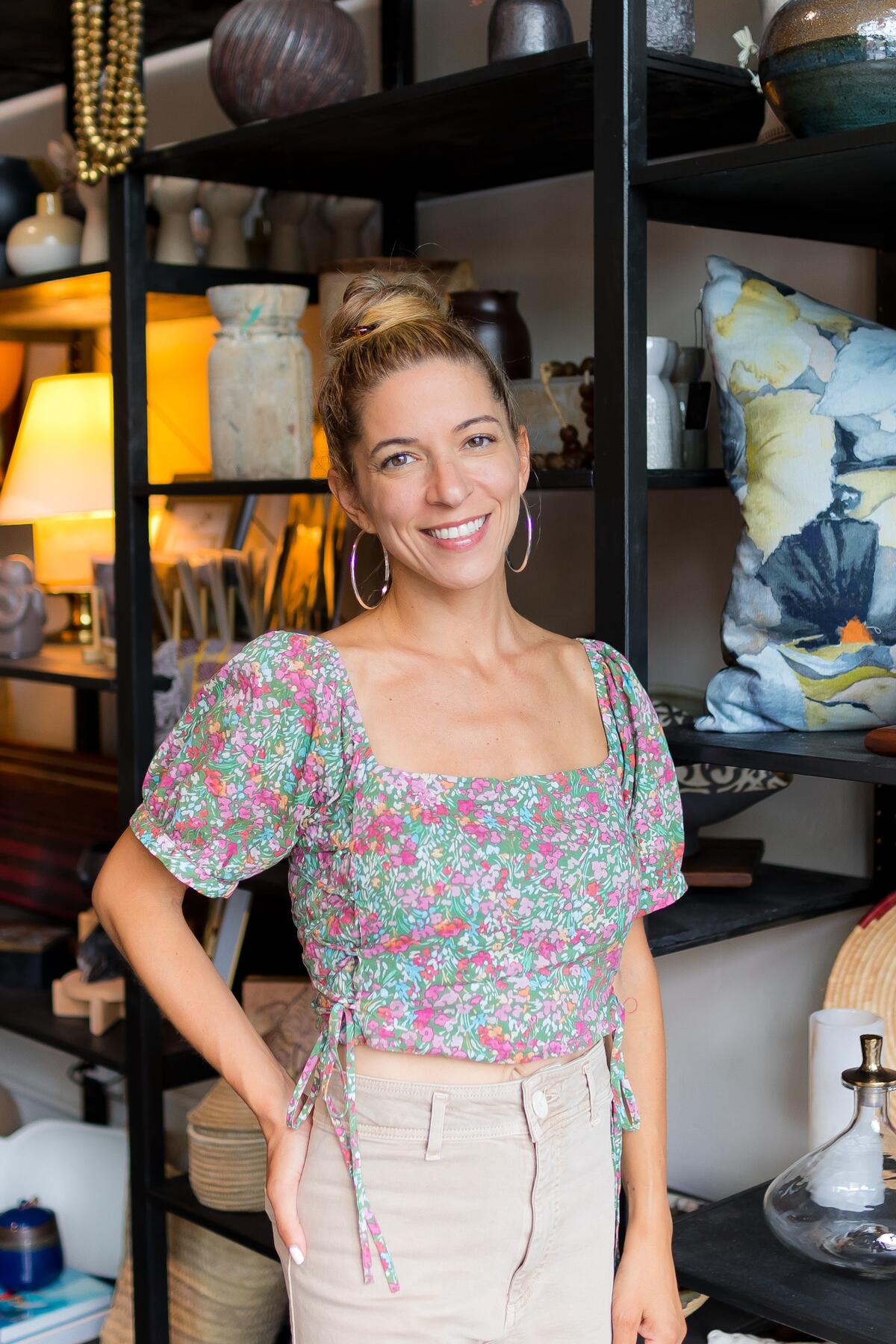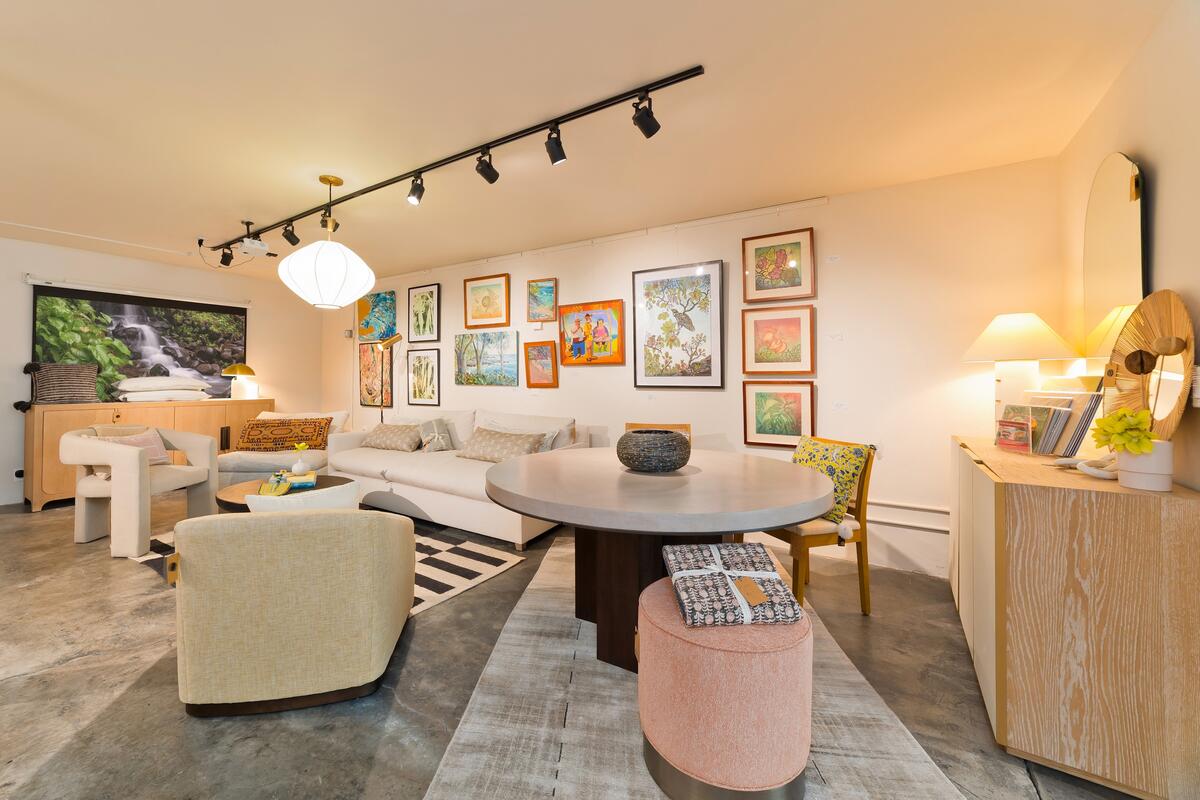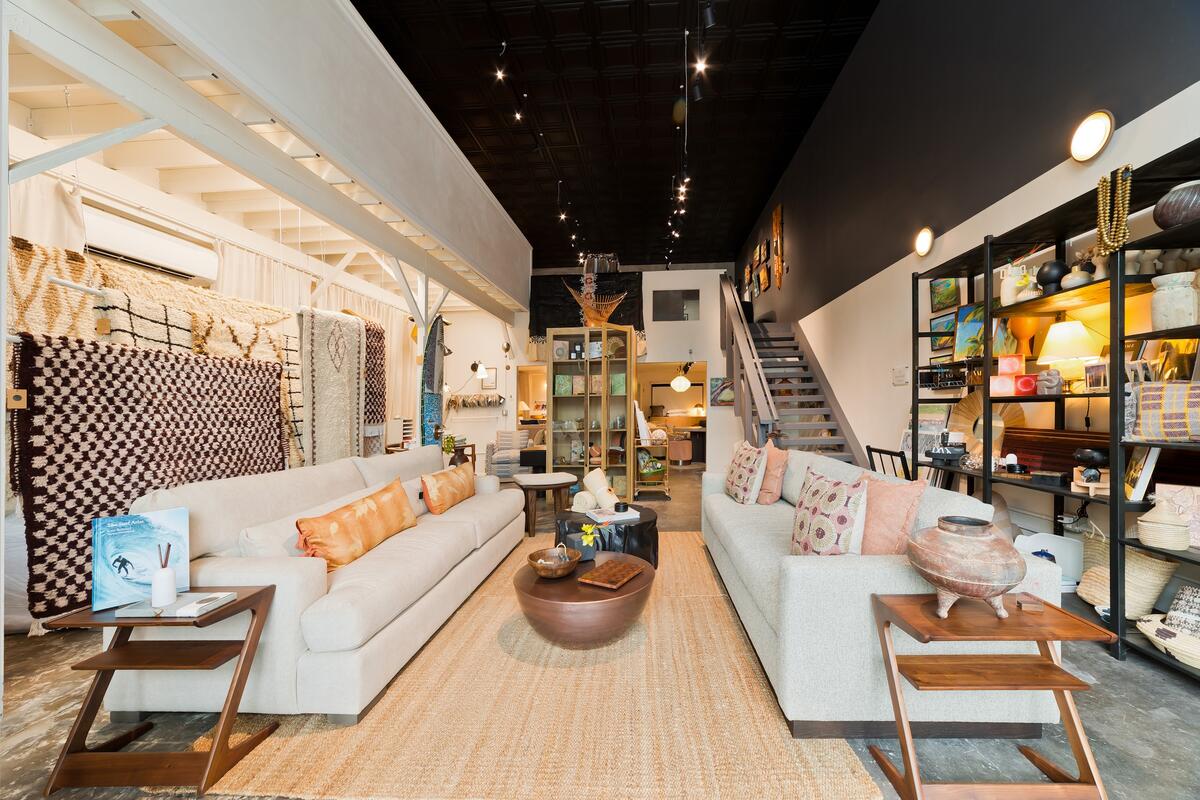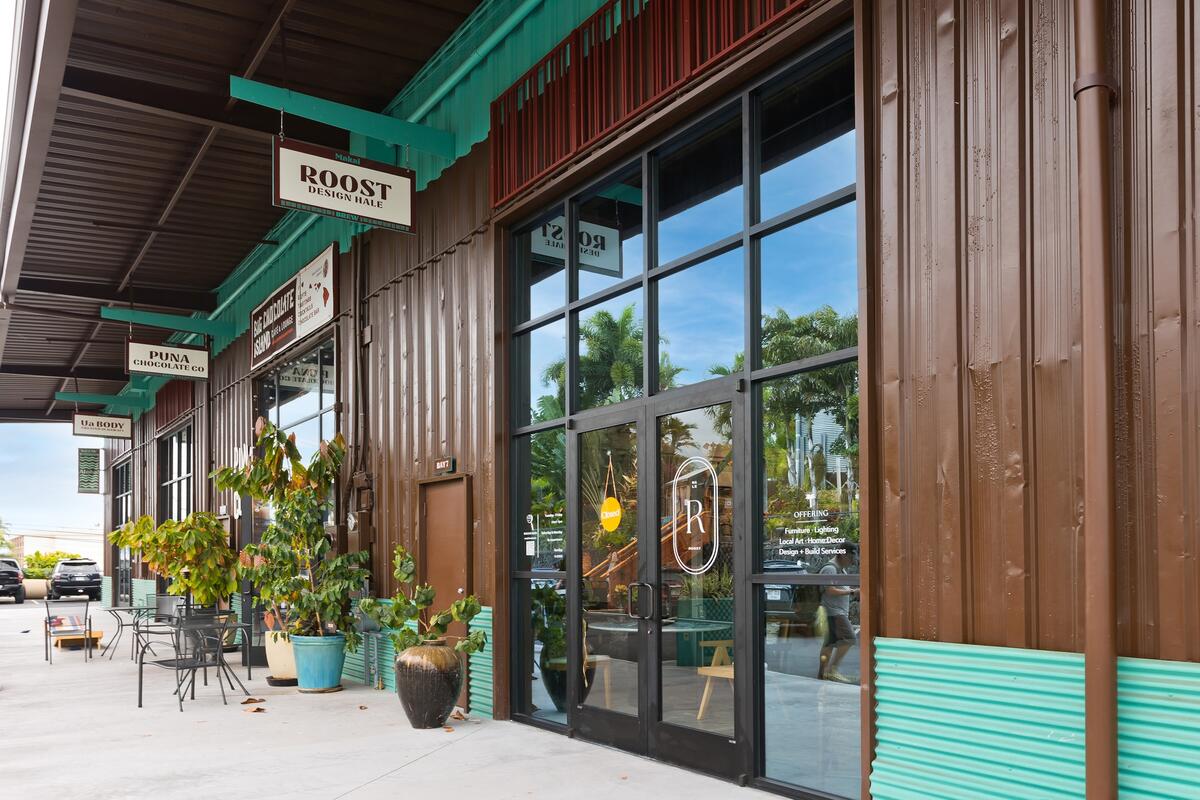In Business of Home’s series Shop Talk, we chat with owners of home furnishings stores across the country to hear about their hard-won lessons and challenges, big and small. This week, we spoke with designer Barbie Burch, co-owner and principal designer of Roost Design Hale on Hawaii’s Big Island.

After nearly a decade and a half designing in Southern California, Burch moved out to Hawaii during the pandemic and decided to stay. As both a designer and a customer, she struggled to find products and decor anyplace other than Costco—and most of the big-box chains don’t even have locations in the area. In the hope of filling that void, last fall she opened Roost Design Hale in the town of Kailua-Kona on the island’s west coast. Ahead, Burch discusses finding local artists, dealing with shipping costs, and explaining price points to walk-in customers.
What was your career like before the shop?
I am an interior designer. I went back to school for that in 2006 and started my career in Los Angeles. I moved to Hawaii in 2020, and I continued working on projects in Southern California during the pandemic. I realized that on the Big Island, it’s largely rural; it’s not like Oahu, the closest city. All the clients I was meeting here were having a heck of a time finding [furnishings], as [was] I. When we moved, I asked my real estate agent to measure the house for me so that I could do all my purchasing in L.A. and put it on a container to ship. That’s what led to [my store]: trying to do some modern stuff in this middle price point. A lot of people here will just go to Costco and shop for furniture, or it’s the 1 percent and they’re flying in their designers from the mainland. I was just trying to fill that void in the center.
How would you describe the aesthetic?
Really large scale. There’s not really anything midcentury, which is very popular back in L.A. I’d say modern, classic, with lots of performance fabrics and indoor-outdoor kind of casual living.
What is the balance of merchandise?
It’s 75 percent furniture. The art is all island-based artists, with just a couple of pieces that I sprinkle in from [mainland] vendors. Then a whole bunch of accessories—pillows, branded candles, antique glass beads. About 5 percent is vintage.
Who is your typical customer?
Lots of walk-ins. We’re located in a really up-and-coming little neighborhood with other cute boutiques and restaurants, so it’s a lot of homeowners whose primary or secondary residence is here, who don’t necessarily have their own designers. I’m still designing, so I bring in my clientele, and then we try to emphasize on the website that we can get you anything. It doesn’t make sense for me to carry the top price points, because they would sit on the floor forever. I’m trying to find that balance of what people can afford, while still letting people know, “Hey, I can get you that thousand-dollar chair.”
Can you tell me about a vendor you love?
We work with a woodworker who makes these really beautiful cutting boards out of local woods—Lion Legacy Finish Carpentry. I went to a fundraising auction for the Society for Kona’s Education & Art, called SKEA, and he had donated a few of his cutting boards for auction. I begged him, “Can you please come into the store? Can we talk? I’d love to carry these.” And he did. Now he’s making us custom coasters, and we’re going to be doing branded stuff with him.

Is there a category that flies out the door?
Our art prints, because they’re a lower price point. Plus, for all the tourists, it’s something that they can stick into their carry-on easily. Prints, our branded candles, and anything that’s small [with] a little flair of Hawaii tend to do really well.
What about your favorite category?
Our upholstery. I’m the one who does all the purchasing and picks fabrics and finishes, so each piece is something that I would put in my own home or in a client’s home. We try to find that healthy balance, again, with price point, but always select performance fabrics [because they’re] kid-friendly, or they’re great living close to the ocean. I’m really happy with our upholstery choices, and I always want to take them home. The struggle!
How do you find your vendors? Is it complicated to get representation with some of the major lines in Hawaii?
It hasn’t been difficult opening accounts—most of them I already had as a designer. If anything, it was, “Hey, do I get better pricing now that I have brick-and-mortar?” But a lot of our clients don’t understand how expensive it is to get anything here in the first place. They’ll be like, “It’s how much for a sofa?” And it’s like, “You have no idea what my margins are compared to somebody on the mainland.”
Tell me a bit more about the logistics. Does it mean larger purchasing orders? Astronomical shipping costs?
Astronomical shipping costs, for sure. I would say, on average, a 7-to-8-foot sofa costs me $1,200 to get it here. For example, we just bought a Four Hands sofa for a client, so it’s on our website [portfolio imagery]. We’ve had multiple people call in asking for this sofa because they’re like, “Great price, $2,800!” It’s $2,800 if you live on the mainland; here, tack on $1,200, because I can’t pay for your shipping. The shipping is a big hassle, plus the delays—you’re adding at least two weeks to get anything.
How do you handle that? How do you introduce it to customers, or are they used to it because they’re in Hawaii?
My average design client understands that, but I would say the average store customer does not. Our margins are definitely lower than if I had a lease space in L.A. It’s case by case, literally item by item—I go in and calculate my costs, plus the free costs prorated per the shipment that I got in, and then try to find a healthy place where I’m still making some income.

To go back to the sourcing—how do you find the local vendors, and do you ever use online platforms?
Faire is where we ended up finding the maker for our Roost candles. I love shopping there when I have a minute of downtime, which has become very rare. I love finding new sources, especially stuff that’s not already at Las Vegas Market. Finding local artists has been through going on art tours. I met the first artist that we signed, Andrea Pro, on a SoKo [South Kona Artists Collective] tour, and then she introduced me to other artists. It’s a lot of word-of-mouth here, whether [you’re] looking for a designer or furniture. They call it “coconut wireless.”
Do you have an e-commerce strategy, or is it not worth it to ship anywhere that’s not within the islands?
I don’t really have a strategy. We use Shopify for our POS system, and our website is built in Shopify, so it shows everything that we have in stock. You can purchase for pickup, but zero people have ever used that. We have gotten calls where they said, “Hey, do you actually have this in-store?” and they’ve come. We could even drop-ship if, let’s say, they’re on Oahu.
Are there any other challenges of operating in Hawaii? Supply chain? Inflation? I imagine all of those would be exacerbated by living where you live.
All these things are challenges here. Thankfully, Covid is over, so at least for building materials and stuff like that, we’re functioning again. But there’s a shortage of everything here. A shortage of employees who would make a great fit—there isn’t a big pool of talent sitting around.

My understanding is that there’s no Crate & Barrel or CB2 or West Elm in the islands, so you’re not competing with them. Is it a bit easier to be a small-business owner in Hawaii in that respect?
There’s less direct competition, certainly, and the fact that it’s so difficult to get things here is also in my favor, because I don’t get “shopped” the way a lot of stores do back on the mainland. There, you walk in and you’re like, “Oh, cool, I’m going to Google this real quick. It’s cheaper on whatever website.” Here it’s like, “Well, by the time I get it in four weeks and pay the shipping on top of it, I might as well [buy] it here.” And we’re competitive; I don’t want to price-gouge anybody. It’s just about making a fair revenue, because we obviously paid a lot for a build-out and have a lease and employees to pay. We’re just trying to be successful. Opening a store is really capital-intensive, so if I had grown up here and tried to start a career doing this here … this isn’t the cheapest small business to start. I’m really grateful that I had a career that led to the opportunity to invest in this.
What’s your favorite day as a shop owner?
The Brew Block is the name of our neighborhood. It’s really bustling, and it has all this great energy, and there’s music playing outside. I love it when it’s just another beautiful day in paradise, and there’s lots of traffic but I actually have the time to stare at my store and style shelves and move furniture around. That’s when it gives me the warm fuzzies, because I had dreamed of having a store since I was a little kid. Then the drudgery of running two-plus businesses takes over, and you’re on deadlines for presentations and all this stuff. I get so consumed. [So] my favorite days are when I’m actually sitting in these spaces and creating vignettes and styling—and interacting with customers instead of my laptop.





























